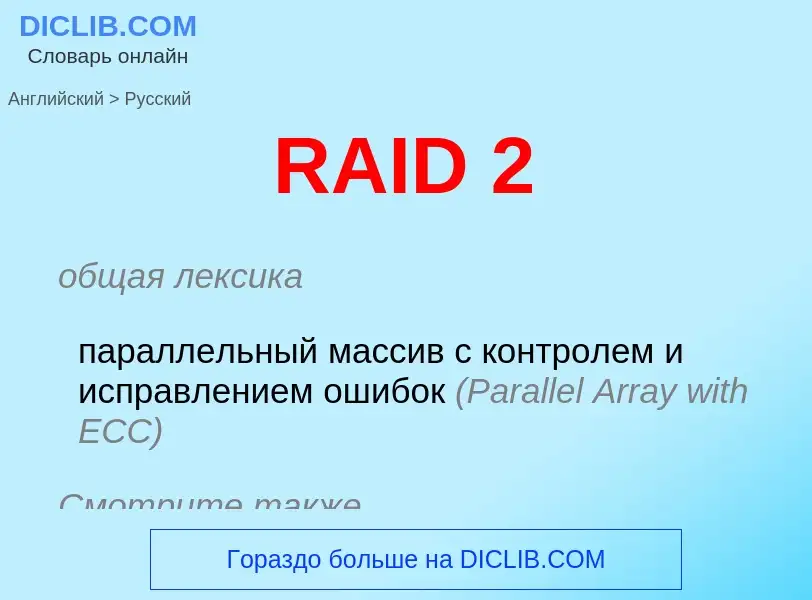Traducción y análisis de palabras por inteligencia artificial ChatGPT
En esta página puede obtener un análisis detallado de una palabra o frase, producido utilizando la mejor tecnología de inteligencia artificial hasta la fecha:
- cómo se usa la palabra
- frecuencia de uso
- se utiliza con más frecuencia en el habla oral o escrita
- opciones de traducción
- ejemplos de uso (varias frases con traducción)
- etimología
RAID 2 - traducción al Inglés
общая лексика
параллельный массив с контролем и исправлением ошибок (Parallel Array with ECC)
Смотрите также
общая лексика
запись с расщеплением данных (Non-Redundant Stripped Array)
Этот уровень объединения дисков в массив определяет неизбыточную группу дисков (обычно три), на которые производится запись с использованием расщепления данных, что обеспечивает максимальную производительность дисковой подсистемы. Недостаток - чувствительность к надёжности отдельных дисков
Смотрите также
общая лексика
расщеплённый массив с контролем (по) чётности (Stripped Array with Parity)
Как и RAID 3, требует дополнительного диска для данных контроля по чётности, только данные расщепляются посекторно, а не побайтно. Это обеспечивает более быстрое выполнение операций чтения с дисков. Редко используемый тип дискового массива
Wikipedia
In computer storage, the standard RAID levels comprise a basic set of RAID ("redundant array of independent disks" or "redundant array of inexpensive disks") configurations that employ the techniques of striping, mirroring, or parity to create large reliable data stores from multiple general-purpose computer hard disk drives (HDDs). The most common types are RAID 0 (striping), RAID 1 (mirroring) and its variants, RAID 5 (distributed parity), and RAID 6 (dual parity). Multiple RAID levels can also be combined or nested, for instance RAID 10 (striping of mirrors) or RAID 01 (mirroring stripe sets). RAID levels and their associated data formats are standardized by the Storage Networking Industry Association (SNIA) in the Common RAID Disk Drive Format (DDF) standard. The numerical values only serve as identifiers and do not signify performance, reliability, generation, or any other metric.
While most RAID levels can provide good protection against and recovery from hardware defects or defective sectors/read errors (hard errors), they do not provide any protection against data loss due to catastrophic failures (fire, water) or soft errors such as user error, software malfunction, or malware infection. For valuable data, RAID is only one building block of a larger data loss prevention and recovery scheme – it cannot replace a backup plan.

